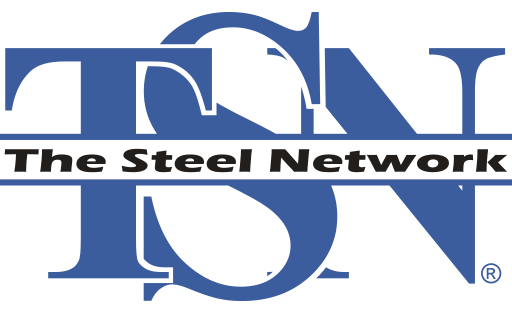Cold-formed steel (CFS) framing is often used for non-structural applications such as interior partitions. But it can also be used as the main structural framing element of a building, and that may require a whole new set of knowledge for owners, project managers, estimators, foremen, superintendents, code officials and architects.
The Association of Walls and Ceilings Industry (AWCI) has developed a program called Steel—Doing It Right® to provide a thorough introduction to the information a contractor needs to effectively estimate, plan and deliver on a project where CFS is used in structural systems.
Thanks to AWCI, highlights of this course will be included in articles and social posts through BuildSteel.org.
By taking this course, participants can learn about cold-formed steel construction best practices, tap the market opportunity for CFS framing and increase their potential for business growth.
While the course is not a certification program, each seminar participant receives a certificate of attendance. Attending engineers are eligible for 9 Professional Development hours, and 9 LU hours are available for AIA credit via the AIA “Self-Report” option.
The Steel—Doing It Right course promises a solid return on investment. “This seminar will keep the attorneys away and provide information to increase the contractor’s bottom line,” one attendee says.
In this first, Steel—Doing It Right series post, we’ll highlight two main points:
- The advantages of using CFS framing in buildings
- The sustainable attributes of building with metal framing
Steel: A Material with Many Advantages
Steel—Doing It Right, Segment 1.1, covers the advantages of using steel framing in buildings and the potential markets developing for steel framing resulting from the adoption of new model building codes.
If someone were to ask you, what are some of the advantages of metal framing, how many could you list?
Cold-Formed Steel Is …
- Strong
- Light
- Made with consistent quality
- Efficient
- Dimensionally stable
- Isotropic
- Uniform
- Noncombustible
- Resistant to mold and termites
CFS steel framing is strong and light. In fact, it has the highest strength to weight ratio of any common structural building material. CFS stud, joist and track products provide the greatest material efficiency and flexibility in design compared with other framing options, the Steel—Doing It Right online course says.
CFS framing is dimensionally stable, meaning that it will not warp, crack, rot, split, swell or shrink no matter what the humidity level. The shrinkage of a framing material can cause problems, such as nail pops, squeaks, bowed walls and sloping floors. This is not an issue of steel.
Being isotropic, steel is uniform in all directions. You don’t have a different design value for steel as you do with wood, where the installer was to frame either parallel or perpendicular to the wood grain, depending on the application. Instead, CFS studs, joists and track have uniform flat surfaces, which makes it easy for contractors to install attachments to the framing system.
More and more building construction is concerned with safety issues and is going for non-combustible products. Millions of dollars in claims and hundreds of lives are lost every year in building fires. Many of these could have been prevented or losses drastically reduced if steel framing had been used.
Because cold-formed steel is an inorganic product, it does not support the growth of mold which can be a huge issue with wood structures. Concrete and masonry construction brings thousands of gallons of potable water into structures which, if not permitted to dry out properly, can support mold growth.
Finally, steel can be engineered to meet the most stringent code requirements in the highest wind and seismic loads. All these advantages can lead to reduced insurance costs.
Cold-Formed Steel is Green
Steel—Doing It Right, Segment 1.3, provides background on the sustainable attributes of building with cold-formed steel framing.
Cold-formed steel is environmentally responsible. Steel is 100% recyclable.
Unlike fiber-based products like paper and wood or petroleum-based products like vinyl and plastic, the Steel—Doing It Right course teaches, steel is infinitely recyclable, meaning that when steel scrap is recycled into new steel, the new steel can be as strong as or stronger than the original steel in the scrap. This is because the recycling process breaks the steel down to the molecular level, which does not depend upon the length of fibers for its strength and durability.
All steel products including steel framing and steel roofing contain recycled steel. Steel framing contains a minimum of 25% steel scrap using recycled steel takes the pressure off renewable resources.
- A 2,000 square foot home constructed with steel framing would use the scrap metal from six old cars
- That same home built with wood would require 40 to 50 trees
Because steel scrap is needed for its manufacture, steel is the most recycled product on the planet. More steel is recycled that paper, plastic and aluminum combined.
The U.S. Green Building Council, which evaluates buildings and accredits professionals, established Leadership and Energy and Environmental Design or LEED requirements. And cold-formed steel is a perfect fit with LEED. It is also a perfect fit with the green building guidelines established by the National Association of Homebuilders.
CFS: A Key Load-Bearing Element
The AWCI Steel—Doing It Right course, Module 1, says that CFS framing is gaining ground as a load-bearing element.
Cold-formed steel is the material of choice for mid-rise load-bearing construction because it’s lightweight, noncombustible, strong and straight. It can easily and economically be used for structures from three stories to 13 stories, the Steel—Doing It Right course says.
Really, metal framing can be used in virtually every application within a structure. That includes floors, exterior walls, interior walls and roofs and single-family residential construction, “[wherever] the owner values the high-quality, high-performance attributes of cold-formed steel framing,” the Steel—Doing It Right course says.
Cited from BuildSteel
